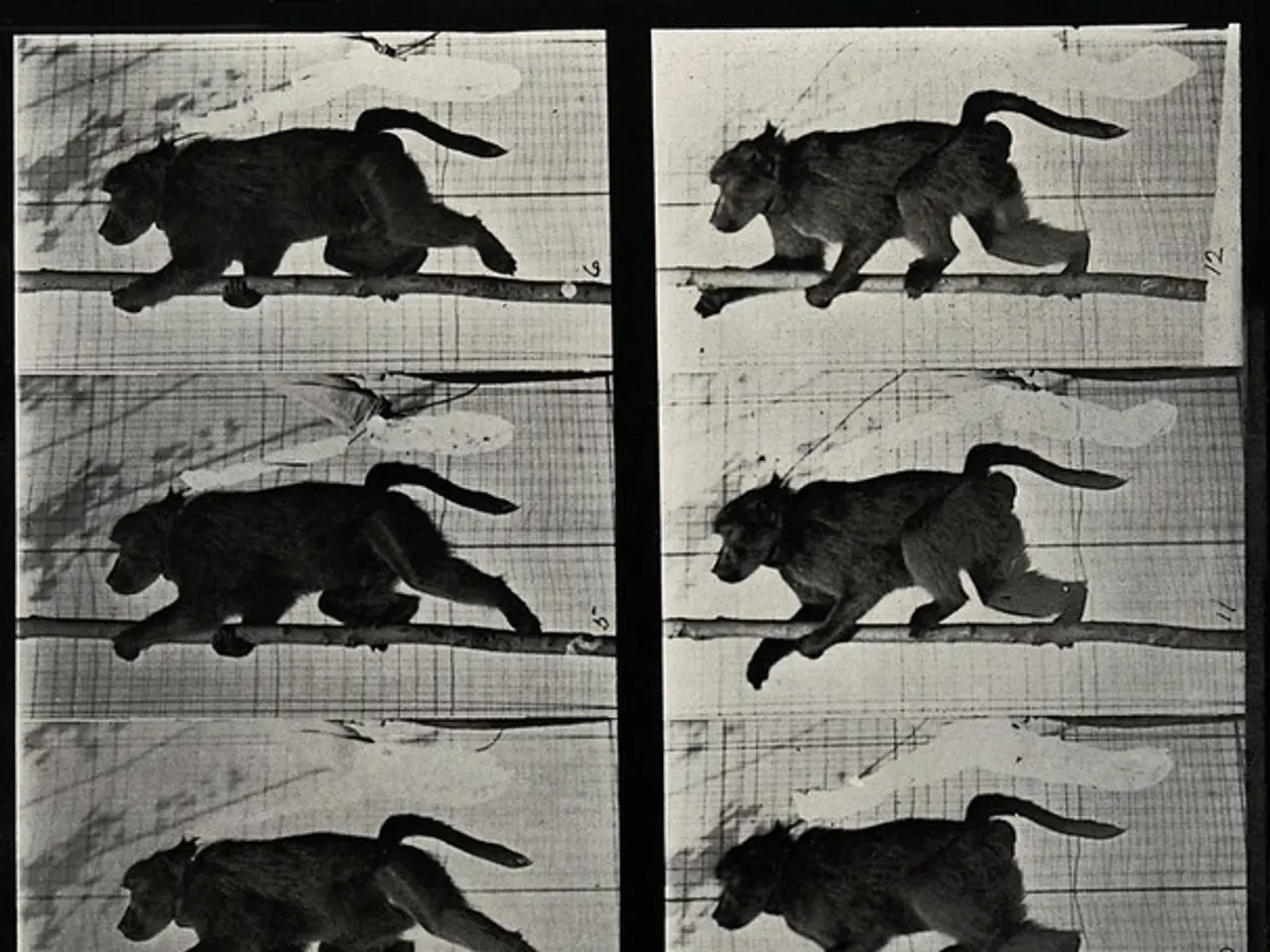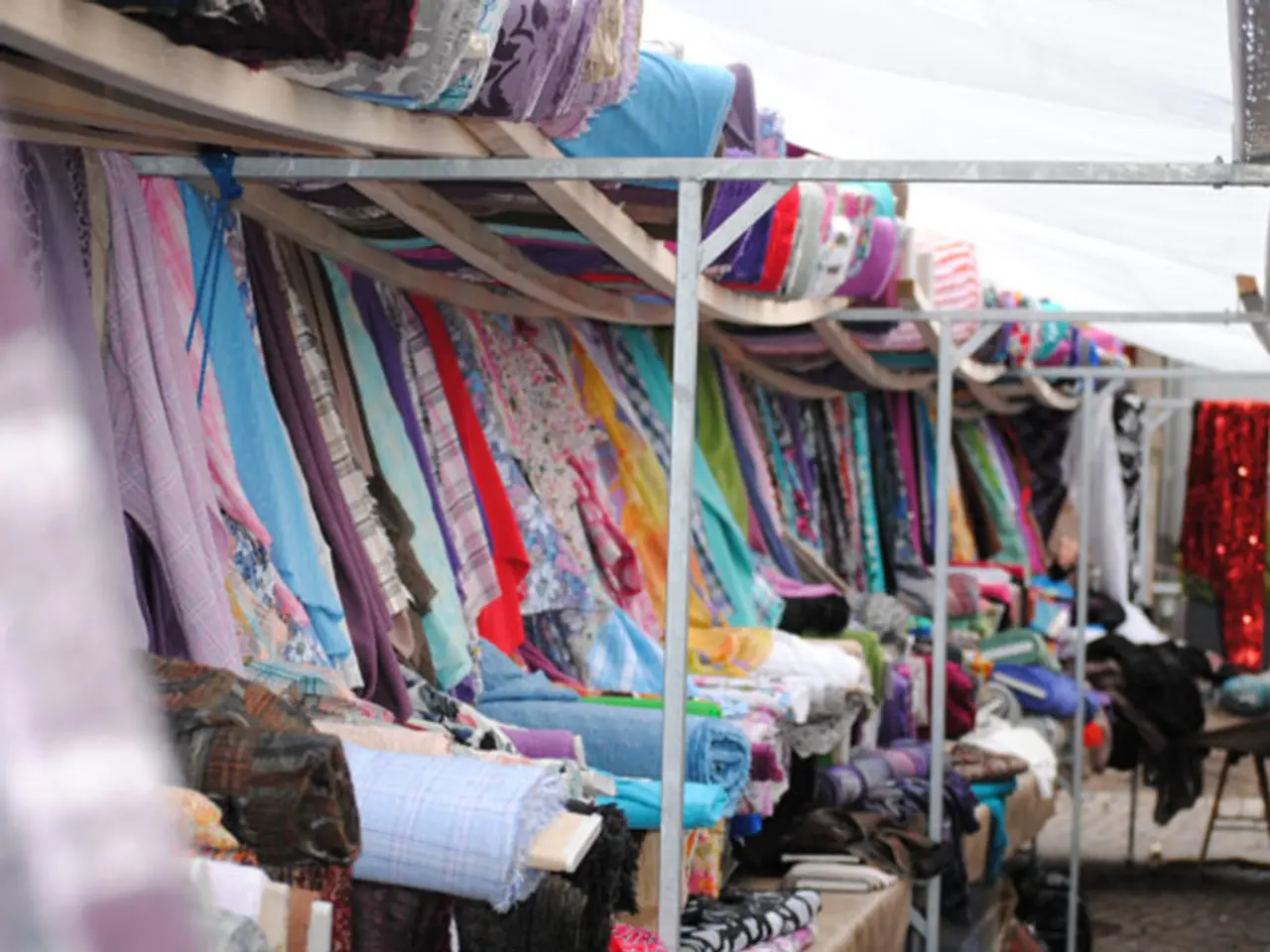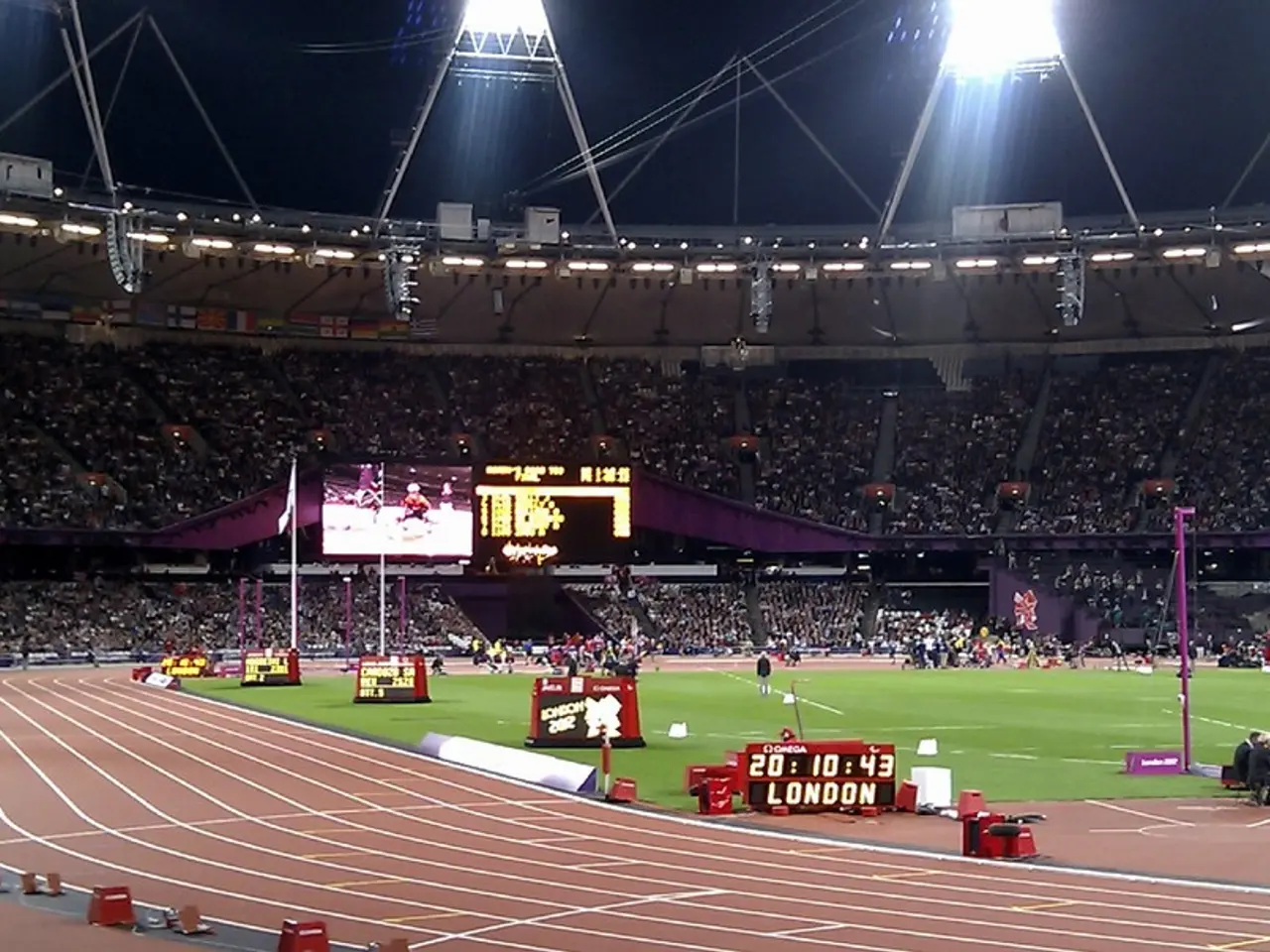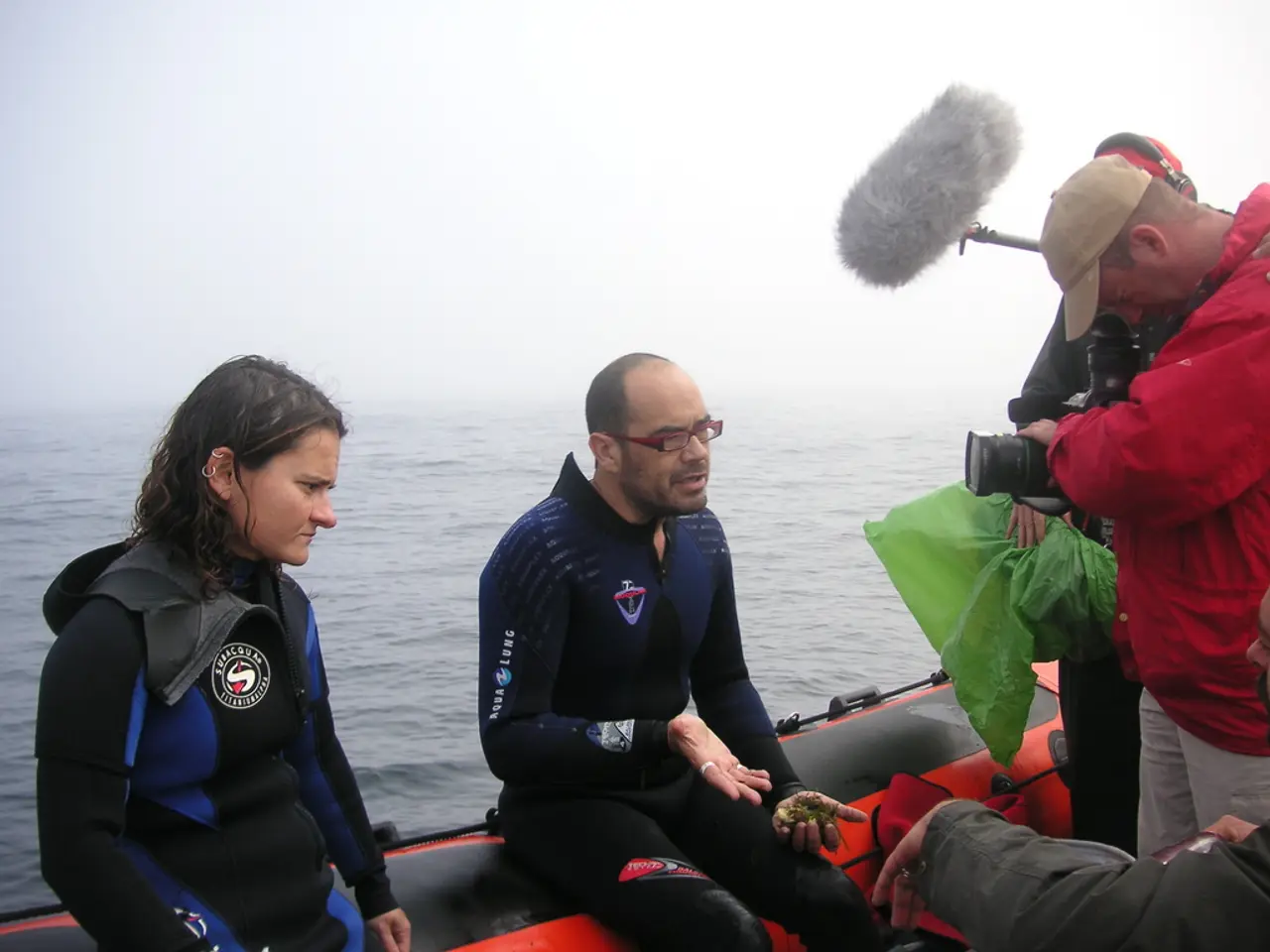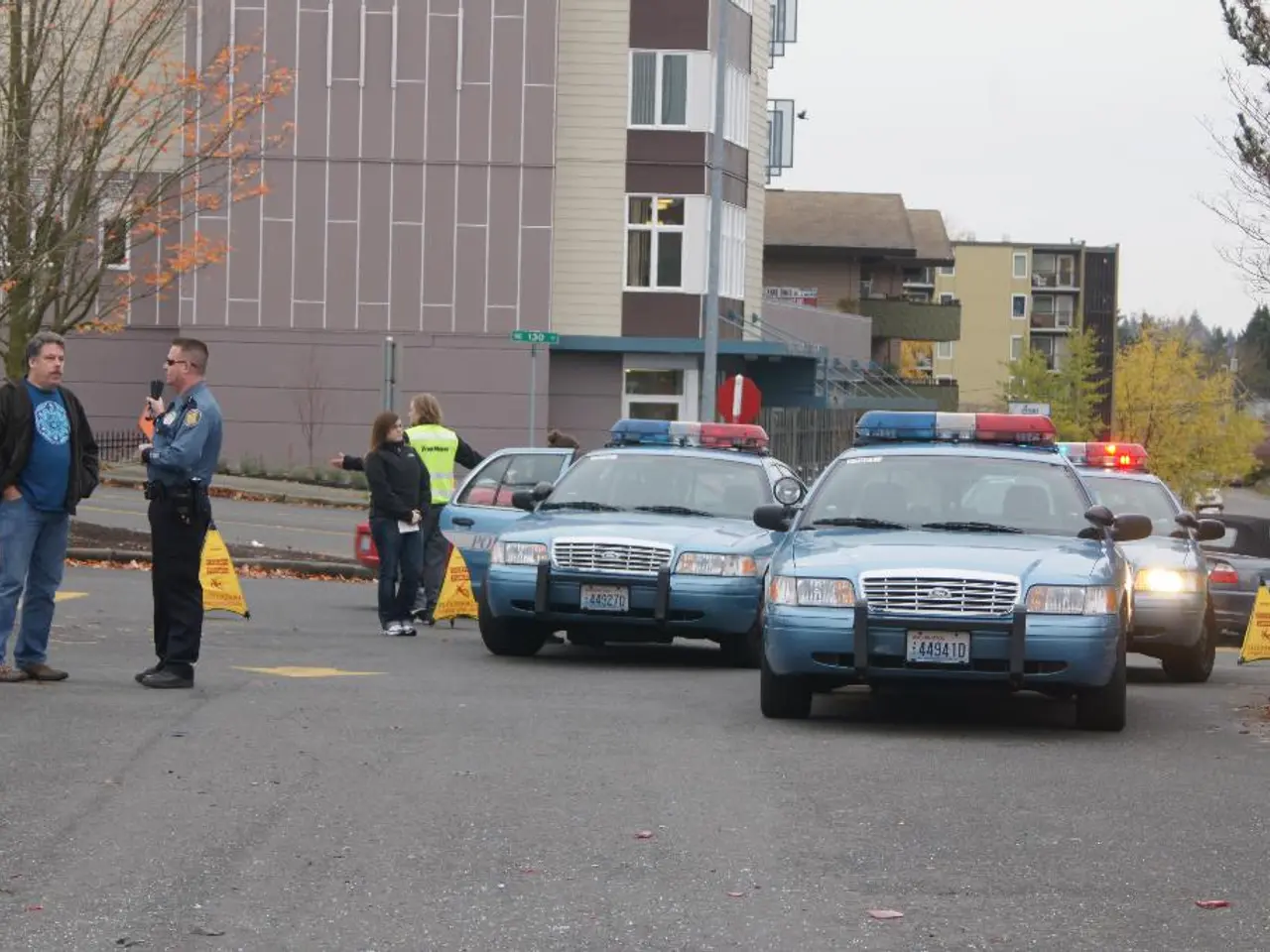Furry pets spark creativity in movie production
In the realm of filmmaking, the bond between humans and animals has been a powerful force, driving innovation and creativity for over a century. From early motion studies to modern CGI, animals have played a significant role in shaping the way we tell stories on screen.
One of the most intriguing aspects of this relationship is the emotional anchor animals provide for actors. They help artists access genuine emotional states, making challenging scenes feel more authentic [1]. Directors with personal bonds with their pets often become powerful advocates for ethical animal treatment on set, ensuring that these emotional connections are maintained [2].
Pixar director Pete Docter's observations of his family's dogs were fundamental to developing Dug in "Up." Working with animal actors presents technical challenges, but creative solutions are often found to ensure realistic and engaging animal performances [3]. Cinematographers have developed specialized camera rigs, lighting approaches, and framing techniques for capturing convincing animal performances.
The influence of animals extends beyond live-action films. In early cinema, animals were often subjects of motion studies and animation. Eadweard Muybridge's photographic studies of animals in motion in the late 19th century helped filmmakers understand movement, while animators like Wladyslaw Starewicz brought insects and other animals to life using stop-motion animation [4]. This laid the groundwork for animated animal characters that became cultural icons, such as Mickey Mouse and Bugs Bunny [4].
Depiction of animals in live-action films has driven significant advancements in special effects. A landmark example is Jurassic Park (1993), where realistic dinosaurs were realized through a combination of animatronics and cutting-edge CGI [5]. The desire to depict believable dinosaurs led filmmakers like Steven Spielberg to collaborate closely with effects artists and engineers to create full-scale robotic dinosaurs and computer-generated models, pushing the boundaries of visual effects [5].
Animals have also influenced thematic storytelling and film narratives, inspired by literature or scientific curiosity. Adaptations of works like The Island of Doctor Moreau, involving human-animal hybrids and ethical questions, have inspired multiple film versions [6].
Modern animal trainers like Teresa Ann Miller focus on positive reinforcement techniques that create authentic animal performances [7]. Jon Favreau pioneered photorealistic CGI animals in "The Jungle Book" and "The Lion King" to avoid potential ethical concerns with live animal actors [8].
The presence of animals during film production, whether working animal actors or personal pets visiting the set, creates a unique atmosphere that transforms the creative energy of a set [9]. Unscripted interactions with animals, such as in "John Wick" with Keanu Reeves and the beagle puppies, add emotional resonance to scenes [10].
Legendary directors like Alfred Hitchcock and Stanley Kubrick had deep bonds with their animal companions, which influenced their portrayal of animals as complex characters in films [11]. Marielle Heller's cat's contradictory nature provided the template for nuanced feline characters in her work [1]. Directors like Wes Anderson and Taika Waititi have embraced the unpredictability of animal-inspired moments, allowing them to reshape scenes organically [1].
Tim Burton's peculiar relationship with his childhood dog influenced the heartfelt portrayal of Sparky in "Frankenweenie" [12]. Martin Scorsese's dogs have been credited with influencing his approach to loyalty themes in films like "Goodfellas" [13].
In summary, animals have motivated filmmakers to experiment with technology, to explore new narrative forms, and to enhance audience engagement by making animal characters central to both artistic and technical innovations throughout film history. Their presence on set fosters communication and camaraderie among team members and often leads to unscripted interactions that add emotional resonance to scenes. The evolution of animal training methods has revolutionized aspects of filmmaking, benefiting all production.
Pixar director Pete Docter's personal connections with pets have influenced his work, specifically in the development of Dug in "Up." Similarly, modern animal trainers like Teresa Ann Miller emphasize positive reinforcement techniques to create authentic pet performances in movies [7, 7].
In the world of entertainment, pets, lifestyles, movies-and-TV, and even animation have intertwined throughout history, shaping storytelling and fostering innovative techniques in filmmaking [1, 7, 4, 8, 1].
